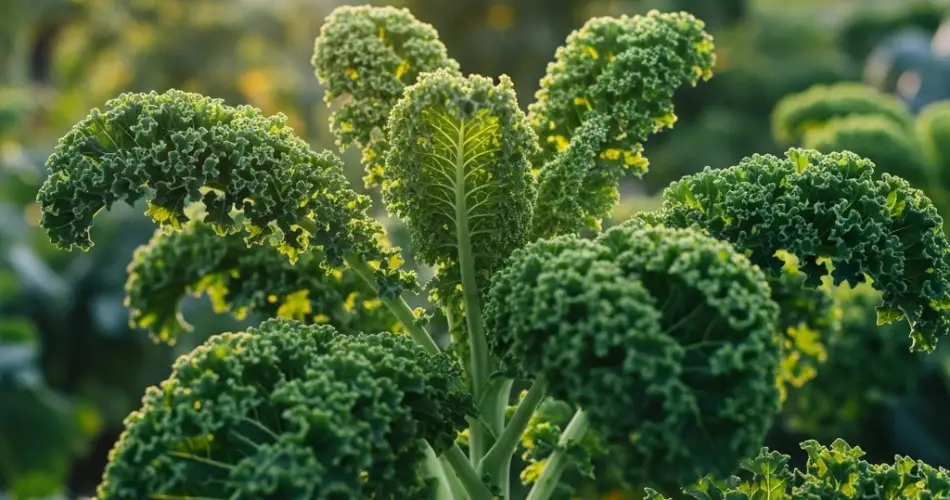Kale is a nutritional powerhouse and a garden favorite, especially in cooler months. However, like many leafy greens, it’s highly susceptible to pests—particularly aphids. These tiny insects cluster on the undersides of kale leaves, sucking plant juices and leaving behind sticky residue (honeydew) that attracts ants and promotes mold.
While chemical pesticides may eliminate aphids, they also harm beneficial insects and leave residues on your food. Fortunately, there’s a simple, natural spray you can make at home to control aphids effectively—without resorting to harsh chemicals.
Let’s explore what aphids are, how to identify them, and how to make and use a natural spray that keeps your kale healthy and thriving.
Understanding the Aphid Problem
Aphids are small, soft-bodied insects that come in various colors—green, white, black, or even pink. On kale, green aphids are the most common. They feed by piercing plant tissue and drawing out the sap, which weakens the plant, causes leaf curling, and can stunt growth.
Their rapid reproduction rate makes them particularly challenging. A single aphid can produce dozens of offspring in a short time, and they tend to hide beneath leaves where they are harder to spot.
Some signs that your kale may be infested include:
-
Sticky residue on leaves (honeydew)
-
Misshapen or curling leaves
-
Ants crawling around the plant (they feed on aphid honeydew)
-
Visible clusters of tiny insects, especially on new growth
Why Natural Control Matters
Chemical insecticides might eliminate aphids, but they can also:
-
Kill pollinators and beneficial insects like ladybugs and lacewings, which naturally prey on aphids
-
Contaminate soil and nearby plants
-
Leave unsafe residues on edible leaves
A natural spray provides a safer alternative that protects both your health and the environment while still keeping pests under control.
Natural Spray Recipe to Control Aphids
This homemade solution is both simple and effective. It relies on common kitchen ingredients and is safe to use around children and pets.
Ingredients:
-
1 tablespoon of mild liquid soap (e.g., castile or unscented dish soap)
-
1 liter (about 4 cups) of water
-
Optional: a few drops of neem oil or a pinch of cayenne pepper for extra potency
Instructions:
-
Mix the liquid soap with the water in a clean spray bottle.
-
Add neem oil or cayenne pepper if desired.
-
Shake well to combine.
The soap works by breaking down the protective outer layer of aphids, effectively dehydrating them. Neem oil adds antifungal and insect-repellent properties, while cayenne pepper irritates soft-bodied insects.
How to Apply the Spray
-
Inspect and Identify: Check your kale plants early in the morning or late in the afternoon. Look closely at the undersides of leaves where aphids hide.
-
Spray Generously: Spray the solution directly onto aphids and affected areas. Be sure to soak both the tops and bottoms of the leaves.
-
Repeat Every Few Days: Reapply the spray every 2–3 days for a week, or until you see a reduction in aphids.
-
Rinse Before Eating: Always rinse kale leaves thoroughly before consuming them to remove any remaining soap.
This spray is most effective when used at the first sign of infestation. For severe outbreaks, combine spraying with manual removal by gently hosing aphids off or pinching heavily infested leaves.
Additional Tips to Prevent Aphids on Kale
While natural sprays are useful, prevention is the best long-term solution. Try these strategies to keep aphids from becoming a problem in the first place:
-
Encourage Beneficial Insects: Attract ladybugs, lacewings, and parasitic wasps by planting flowers like marigolds, dill, or yarrow nearby.
-
Use Row Covers: Lightweight fabric row covers can act as a physical barrier to pests while allowing light and moisture in.
-
Interplant with Aromatic Herbs: Aphids dislike strong-smelling plants like garlic, chives, basil, and mint. Plant these near your kale to deter them naturally.
-
Avoid Over-fertilizing: Aphids are drawn to new, tender growth. Too much nitrogen can produce lush leaves that are more appealing to pests.
-
Rotate Crops: Avoid planting kale or other brassicas in the same spot each season, as aphids and their eggs can linger in the soil.
Final Thoughts
Aphids may be persistent, but with a bit of attention and a natural spray, you can keep them in check without compromising your garden’s health. This simple, effective homemade solution protects your kale from infestations while ensuring your harvest remains safe and chemical-free.
By combining regular inspection, gentle natural remedies, and preventive planting strategies, you can enjoy crisp, delicious kale all season long—without unwanted visitors tagging along.



